Of Vending Machines and Subway Stations
27 May 2011 22:13 Filed in: Structures,Prototype
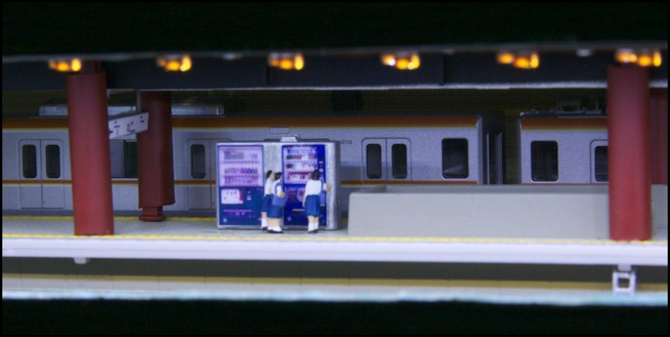
It took longer than expected, but the Riverside Subway station, now known as the (fictional) Tōkyō Metro Kawate station, is done and servicing commuters and schoolkids making their way about Sumida Crossing. Or at least it will once I finish the much-delayed work on the power systems and get the trains running again.
I’d written about the station a couple of weeks ago, and thought I was nearly done then. But there were a number of things that didn’t “feel” right: The signs were hung too high to be visible from outside, the white lighting valance was too bright, and the platforms just seemed a bit repetitious.
I tackled the last part first: Kato’s detail parts for the platforms contained a number of things other than signboards, benches and maps, including vending machines and other sign displays. After some thought, and checking of prototypes, I decided that even through vending machines hadn’t been obvious in the photos of subway platforms I’d seen, there were a few I’d seen in other photos, and vending machines do turn up regularly in surface stations (and a lot of other odd places). So I found some photos I could use, and added them to a couple of Kato’s detail parts.
I also did some more painting, making the front of the valance flat-black, and separating the support part of the platform and painting it a concrete gray, which isn’t too visible in the photos but looks nicer in person than the original Kato plastic, which hadn’t been consistent from one platform section to the next. And I added a second strip of LEDs to the other half, so now both halves have a reasonable color of light, and plenty of it for photography (between them the four strips draw about ¾ of an amp, which is quite a lot for a bunch of surface-mount LEDs).
The end result turned out pretty well:
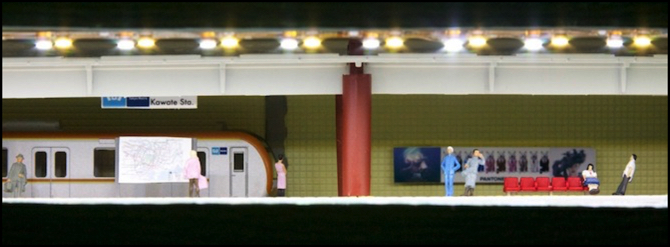
Original Painted Platform
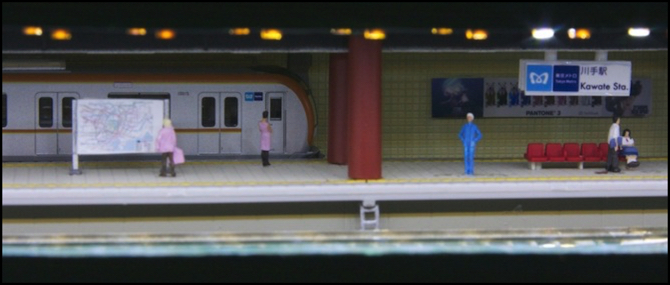
Revised Painted platform
The station’s done now: the back wall glued in place, the lighting on both sections fixed to use two strips of LEDs, and the people all glued down (a couple decided to tilt before the glue set, so I’ll eventually go back and fix them, but I removed the worst offenders and the rest can stay as they are for now.
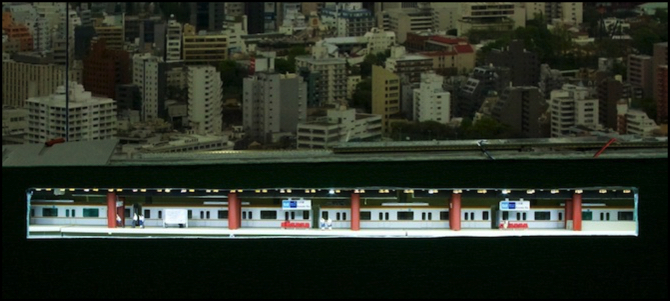
Left side
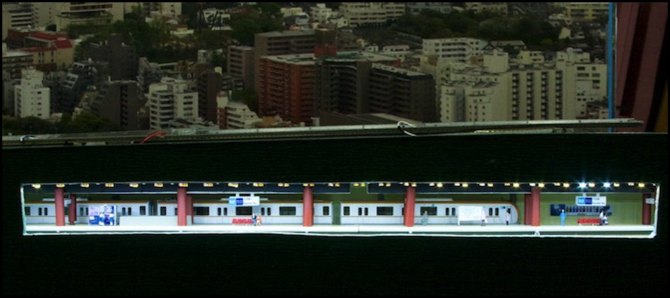
Right side
For anyone interested, the platforms I used to make the subway station were Kato’s Island Flag Stop Platform Set 23-120 (containing two 23-107 platforms, and two short, square ends), one more of the Island Flag Stop Platform A (23-107) and two of the Island Flag Stop Platform B (23-108, containing stairs leading down). That provides a platform just over 1.3m in length (a bit more than four feet), which is long enough for six-car subway trains.
Going down isn’t the usual way to exit a subway, but since it’s under the express tracks you can’t very well go up. I’m presuming there’s a tunnel out to a station concourse off to one side, or maybe under the river to the commuter station I haven’t built yet.
Vending Machines
As part of this, I ended up researching vending machines by browsing through hundreds of photos on Flickr looking for images I could use, as well as trying to understand what the machines provided and where they were located. Japanese vending machines are really something: you can get nearly anything from them, including fresh produce, clothing, batteries, beer and wine, hot coffee and tea, and the usual snacks and beverages.
And the things are, quite literally, everywhere: on residential streets, in parks, on mountaintops, and in train stations, not to mention in shrines and on street corners.
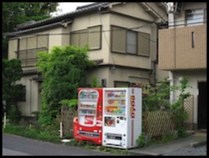
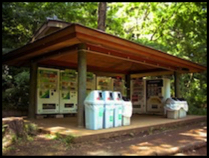
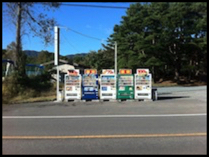
Residential street, park, and mountaintop (click on photo for Flickr original)
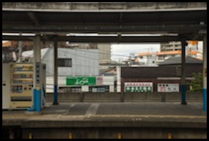
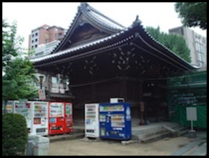
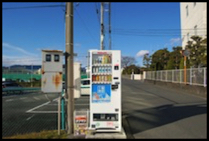
Commuter station, shrine, and street corner
They can also be found in large numbers, or off by themselves.
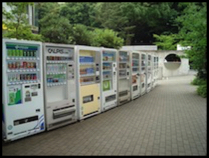
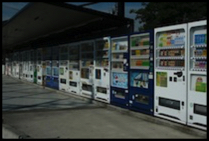
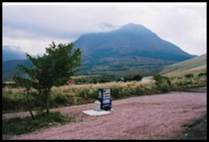
That last one is in a restaurant parking-lot, but it still looks awfully lonely.
Now to be clear, the ones in odd places generally have a good reason for being there. The one in front of a house is actually close to a shrine (and shrines draw large crowds during holidays), and the row of machines in the mountaintop parking lot is in a park near Tōkyō, which undoubtedly also draws large crowds.
And the ones selling things like clothing are typically located in places where that makes sense. For example, a machine selling work gloves and functional underwear was located in a blue-collar neighborhood, and one selling lingerie was located near a love hotel (a hotel catering to short visits by couples; a staple of Japan’s overcrowded cities, where privacy is a rare thing).
I’m somewhat more bemused by the one selling a mixture of men’s ties and disposable cameras. At a guess it was in a place (train station?) catering to both tourists and salarymen (professionals).
The vending machine is clearly a significant scenic element of urban (and not-so-urban) Japan, and thus it is quite appropriate to have a few of them in my subway station. I also really liked the results of using photos of them on Kato’s vending machines, although I could probably just make a box of small styrene strips. This is a technique I’m going to use elsewhere on the layout (see the Scenery photo album for larger images).
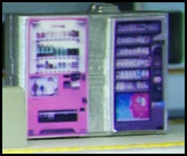
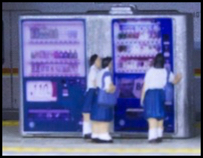
Photographs of vending machines, on Kato machines
Other website changes:
- I updated the Riverside Station Scene page (a complete rewrite) and the Subway Scene page (just a couple of photos) to reflect the work done on the station. I also added photos to the Station photo album.
- As mentioned above I did a lot of research on vending machines, and that yielded a new page for the Scenery section.
- Finally, I updated the “Phase 2k” construction page detailing the final work on the subway station.




